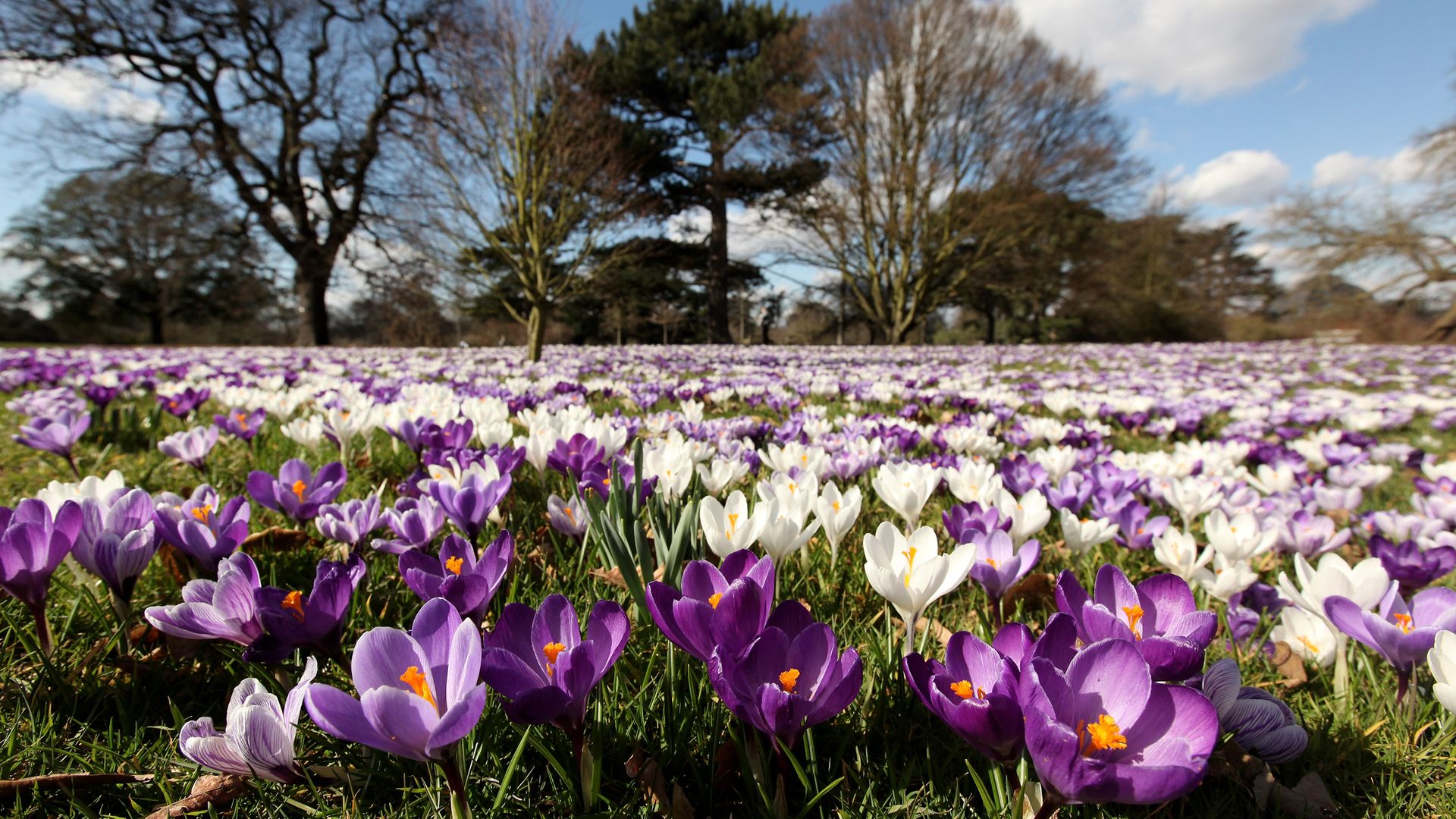
PETER TRUDGILL on why the term for spring has not sprung from where you thought.
The English word spring has many different meanings. It can refer to a place where water comes up out of the ground – a source or wellspring. It can signify an energetic forward or upward movement – a leap or jump. It can refer to a piece of coiled metal – a device, as the Oxford English Dictionary says, “which can return into shape after being compressed or extended”, as in a clock or a mattress. In architecture, it can refer to the point where an arch or vault rises up from a supporting pillar. And, amongst a number of yet other meanings, spring can also denote the period of the year which comes in between winter and summer.
This last usage, to refer to the season, does not seem to have become very common in English until the 1600s. Before that, the most usual word for the season was lenten or, later on, lent. We are now familiar with the usage of lent only in the much more restricted sense of the period starting the day after Shrove Tuesday – or Pancake Day, is it was known to irreligious small boys when I was one – and lasting until just before Easter. As a period of fasting, it often went by the name of “Clean Lent”.
The etymology of lenten, ‘spring’, is not certain, but informed philological opinion seems to favour an ancient connection to words such as lengthen and long, the reference being to the fact that days start getting noticeably longer during the spring. Dutch and Afrikaans both still have lente meaning ‘spring’.
The entire Germanic language family has forms of the words winter and summer in common. All of these languages use winter or vinter for ‘winter’, apart from Icelandic and Faroese, which have vetur, and Luxembourgish, where the word is wanter. The words for ‘summer’ in the Germanic languages are also all very similar: sommer, somer, sumar, sommar, zomer, and simmer.
But there is no such agreement about spring. German has Frühling, where früh signifies ‘early’. West Frisian uses maitiid, literally ‘May-time’. The Scandinavian term is vår (vor in Icelandic, and vár in Faroese). This comes from the same Indo-European root wesr which became ver in Latin, giving primavera in Italian and primăvară in Rumanian. Both Dutch voorjaar and Danish forår are literally ‘fore-year’.
I wrote a few weeks ago about the process whereby one word gradually turns into two, as in the case of flower and flour or curb and kerb. Modern English spring is an interesting example of the precisely the reverse process. The contemporary form spring is a single word which developed over time out of two different words. One of those original words was Old English spring or spreng, which referred to a water source – a place where a stream sprang forth from the ground. The second was Old English spryng, ‘leap’, referring to an act of springing into the air.
The two words had become merged into one by the end of the Middle (Mediaeval) English period and are now generally thought of as being the same word; they certainly normally share a single entry in English-language dictionaries. Confusion may sometimes occur, however. “Spring tides” have nothing to do with spring-time but everything to do with springing forth. They are the especially high tides which occur roughly twice a month, throughout the year, when the sun, moon and earth are all in alignment, producing an extra-strong gravitational pull.
The usage of the word spring as the name of the season derives from the old phrase “the spring of the leaf”. This was the vernal counterpart to the (now mainly American) term fall, from “the fall of the leaf”, meaning ‘autumn’. A leaf in spring can just as well be regarded as metaphorically ‘springing out’, like water from the ground, as ‘springing up’, as with in leaping into the air.
Shrove
Shrove in Shrove Tuesday comes from the verb to shrive ‘to impose penance on’, which is in origin the same word as German schreiben, from Latin scribere ‘to write’. Shriven means ‘given absolution’, and short shrift was originally a brief space of time allowed for a criminal to make a confession before execution.
What do you think? Have your say on this and more by emailing letters@theneweuropean.co.uk
Warning: Illegal string offset 'link_id' in /mnt/storage/stage/www/wp-includes/bookmark.php on line 357
Notice: Trying to get property 'link_id' of non-object in /mnt/storage/stage/www/wp-includes/bookmark.php on line 37







